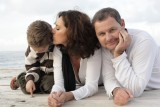Read this ebook for free! No credit card needed, absolutely nothing to pay.
Words: 49899 in 19 pages
This is an ebook sharing website. You can read the uploaded ebooks for free here. No credit cards needed, nothing to pay. If you want to own a digital copy of the ebook, or want to read offline with your favorite ebook-reader, then you can choose to buy and download the ebook.


: The Heart's Domain by Duhamel Georges Brooks Eleanor Stimson Translator - World War 1914-1918 Influence; French essays Translations into English
CHAP. PAGE
INDEX 365
FIG. PAGE
FORM AND FUNCTION
THE BEGINNINGS OF COMPARATIVE ANATOMY
The first name of which the history of anatomy keeps record is that of Alcmaeon, a contemporary of Pythagoras . His interests appear to have been rather physiological than anatomical. He traced the chief nerves of sense to the brain, which he considered to be the seat of the soul, and he made some good guesses at the mechanism of the organs of special sense. He showed that, contrary to the received opinion, the seminal fluid did not originate in the spinal cord. Two comparisons are recorded of his, one that puberty is the equivalent of the flowering time in plants, the other that milk is the equivalent of white of egg. Both show his bias towards looking at the functional side of living things. The latter comparison reappears in Aristotle.
A century later Diogenes of Apollonia gave a description of the venous system. He too placed the seat of sensation in the brain. He assumed a vital air in all living things, being in this influenced by Anaximenes whose primitive matter was infinite air. In following out this thought he tried to prove that both fishes and oysters have the power of breathing.
A more strictly morphological note is struck by a curious saying of Empedocles , that "hair and foliage and the thick plumage of birds are one."
The author of the treatise "On the Joints," which Littr? calls "the great surgical monument of antiquity," is to be credited with the first systematic attempt at comparative anatomy, for he compared the human skeleton with that of other Vertebrates.
Aristotle was quite well aware that each of the big groups of animals was built upon one plan of structure, which showed endless variations "in excess and defect" in the different members of the group. But he did not realise that this fact of community of plan constituted a problem in itself. His interest was turned towards the functional side of living things, form was for him a secondary result of function.
Yet he was not unaware of facts of form for which he could not quite find a place in his theory of organic form, facts of form which were not, at first sight at least, facts of function. Thus he was aware of certain facts of "correlation," which could not be explained off-hand as due to correlation of the functions of the parts. He knew, for instance, that all animals without front teeth in the upper jaw have cotyledons, while most that have front teeth on both jaws and no horns have no cotyledons .
Not only did he lay a foundation for comparative anatomy, but he made a real start with comparative embryology. Medical men before him had known many facts about human development; Aristotle seems to have been the first to study in any detail the development of the chick. He describes this as it appears to the naked eye, the position of the embryo on the yolk, the palpitating spot at the third day, the formation of the body and of the large sightless eyes, the veins on the yolk, the embryonic membranes, of which he distinguished two.
Free books android app tbrJar TBR JAR Read Free books online gutenberg
More posts by @FreeBooks

: The Heir of Mondolfo by Shelley Mary Wollstonecraft - Fathers and sons Fiction; Social classes Fiction; Husband and wife Fiction; Naples (Kingdom) Fiction


: Tolstoy's interpretation of money and property by Stanoyevich Milivoy S Milivoy Stoyan - Tolstoy Leo graf 1828-1910; Money; Property






